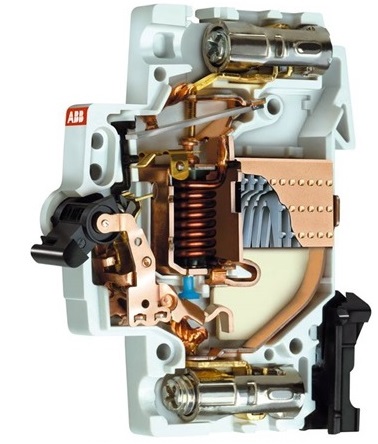Drawing on the legacy of Stotz’s pioneering work in circuit protection, IPD continues to deliver advanced solutions tailored to the needs of today’s complex electrical environments. Our commitment to innovation is evident in IPD’s adoption and integration of contemporary technologies that address current energy management and electrical safety challenges, ensuring that Stotz's pioneering spirit lives on in each service we provide.
The evolution of electrical safety has been marked by significant milestones, none more transformative than the inventions spearheaded by Hugo Stotz. Born into a hotel-owning family in Stuttgart, Germany, on 14 July 1869, Stotz's early exposure to the electrification of Europe fuelled his passion for electrical engineering.
After completing his basic education, Hugo began his career at Maschinenfabrik Esslingen, a factory that manufactured locomotives and technical equipment for railways. It was during this time that Hugo first encountered generator installations, thus setting the stage for his future innovations. At just 18 years old, Hugo was entrusted by the company with the management of generator installations in Venice.
Following the death of his father in 1890, Hugo Stotz and his mother relocated to Mannheim, close to Heidelberg. The following year, then 22-year-old Hugo found a business partner and launched Moye and Stotz Elect Installation. This new venture allowed Hugo to represent the products for the factory where he previously worked. More significantly, he was able to expand into the burgeoning private sector of the electrical market by capitalising on the growing demand for electrical installations.
The company enjoyed steady growth under his leadership. However, the original partnership dissolved in 1896. The business was subsequently rebranded as Stotz and Company - Electrical Installations. Hugo’s relentless drive for innovation was prominently displayed in 1901 when he installed a groundbreaking neon sign above his business premises. Featuring Hugo’s own signature, this sign was reportedly the first of its kind in Germany. Under his visionary leadership, the company rapidly expanded, establishing branches in nine different regions and growing its workforce to 300 fitters.
The turning point in Stotz's career came after he sold his installation business in 1912 to Brown Boveri & Company (BBC), a Swiss conglomerate with a substantial influence in the electrical industry. This strategic move provided a transition for Hugo to embark on a new venture, Stotz & Company—Factory Special Electrical Equipment. With this new setup, Hugo shifted his focus entirely to what he was most passionate about: manufacturing innovative electrical products.
By 1918, Hugo decided to sell his manufacturing business to BBC as well. He now channelled his energy and creativity more intensively into product development, now within the structure of a BBC subsidiary. This period of concentrated innovation led to significant advancements in low voltage circuit protection, a field that was then predominantly dominated by fuse technology.

The commonly used 'bottle fuse' in Europe during this period presented a recurring cost and inconvenience, as it could only protect circuits once before needing replacement. Identifying this inefficiency, Hugo and his engineering team created a revolutionary multiple-link bottle fuse. This new fuse featured nine separate fuse links housed within a rotary chamber, yet it maintained the physical size of a traditional bottle fuse.
In 1923, Stotz and his design engineer Heinrich Schachtner patented a revolutionary device that would redefine circuit protection: the miniature circuit breaker (MCB). This device combined a bimetallic thermal overload with a magnetic trip, offering a reusable, reliable solution for overcurrent and short circuit protection. Patented in the U.S. on May 24, 1927, the MCB laid the foundation for modern circuit protection technology.
The Stotz MCB's success hinged on its precise engineering and ability to be seamlessly retrofitted into existing fuse installations. By the end of the 20th century, this fundamental design had produced over 500 million automatic circuit breakers worldwide.
In 1928, the Stotz company launched the S11 model circuit breaker, which remained in production until 1950. This model further solidified the legacy of Stotz's original design, which continues to underpin the modern miniature circuit breakers used widely in the electrical industry today. Despite introducing modern materials and capabilities, including varied trip curve characteristics and improved short circuit protection, the core design principles established by Stotz's initial innovation remain integral to today's MCB technology.
When ABB was formed in 1988, the Stotz company became vital to its operations. The ABB Stotz-Kontakt factory in Heidelberg, Germany, remains a significant manufacturing base for ABB’s miniature circuit breakers, producing over 42 million units annually. This facility, equipped with advanced, Stotz-designed automated assembly machines, underscores the ongoing commitment to Stotz’s legacy.
IPD, in partnership with ABB, proudly continues Hugo Stotz’s tradition of electrical safety and innovation. Our collaboration is grounded in a shared passion for design excellence and a commitment to advancing circuit protection technologies. Together, we offer a range of intelligent motor control solutions that embody the spirit of innovation Stotz championed.
Building on this legacy, IPD has developed a robust portfolio of solutions that address today’s complex electrical needs. Our expertise extends beyond basic circuit protection, including comprehensive energy management systems, advanced industrial automation, and IoT-enabled devices that optimise operational efficiency and safety.
IPD’s state-of-the-art manufacturing facilities and R&D centres are dedicated to pushing the boundaries of technology, ensuring that each product meets and exceeds industry standards.
For more detailed information about how these historical innovations influence our current offers, and to explore our advanced motor control and protection solutions, visit IPD’s website or contact us directly. Embrace the legacy of innovation with IPD, where the past and future of electrical safety meet.